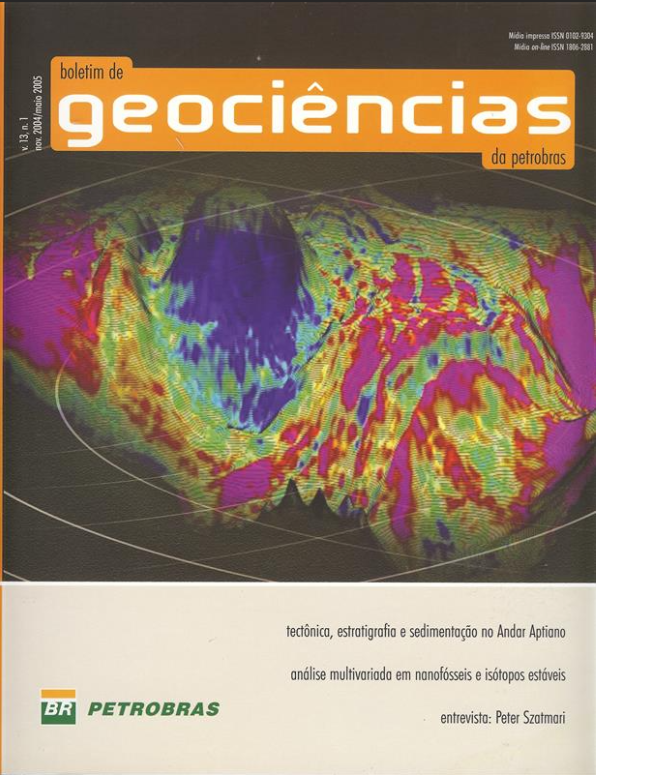Sequence stratigraphy of Taciba and Rio Bonito formations in Mafra/SC area, eastern Paraná Basin
Keywords:
Paraná Basin, Taciba Formation, Rio Bonito Formation, sequence stratigraphy, PaleogeographyAbstract
The Taciba and Rio Bonito (“lower” Triunfo Mbr) formations are divided into six depositional sequences based on cores, gamma-ray and electrical logs from shallow drillings from northern Santa Catarina State. Each sequence is formed by two systems tracts, a lower one, sandy (lowstand) and an upper one, shaly (highstand). The Taciba Formation has three sequences, S0 to S2; sequence S0 has a thick turbidite sandstone at the base (Rio Segredo Member) that pinches out towards the eastern margin and even disappears in the Mafra outcrop area. Sequence S1 varies from a thin fluvial-estuarine system to a thick turbidite sandstone of a channelized fan system; S1 upper shaly system tract is marine in well PP-11, and it is glaciallyinfluenced in well PP-10. Sequence S2 is a thick sandstone body of shallow marine origin, but restricted to one well (PP-11); its upper shaly tract is dominated by massive siltstones intercalated with thin, distal tempestites. The “lower” Triunfo Member (or “Taciba-Triunfo transition”) begins with the arrival of deltaic clastics of sequence S3 lower tract, coarsening-up from medial- to proximal delta front sandstones. Sequence S4 is quite similar to S3, both showing sandstone progradation from north to south, as opposed to the southwest-sourced transgressive diamictites. Sequence S5 consists of fluvial deposits at well PP-12, and two transgressive cycles from wells PP-11 to PP-9, each one of them composed of fluvial-estuarine to marine systems. Well PP-10 is an exception, where the lower cycle presents deglaciation to marine deposits.
Downloads
Published
Issue
Section
License
This license enables reusers to distribute, remix, adapt, and build upon the material in any medium or format, so long as attribution is given to the creator. The license allows for commercial use.




